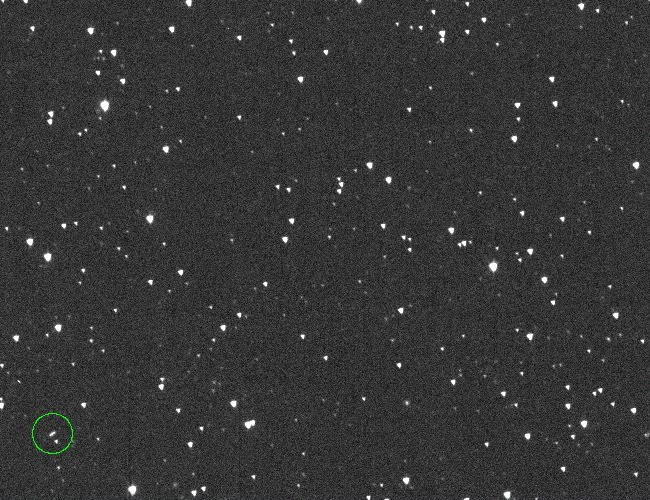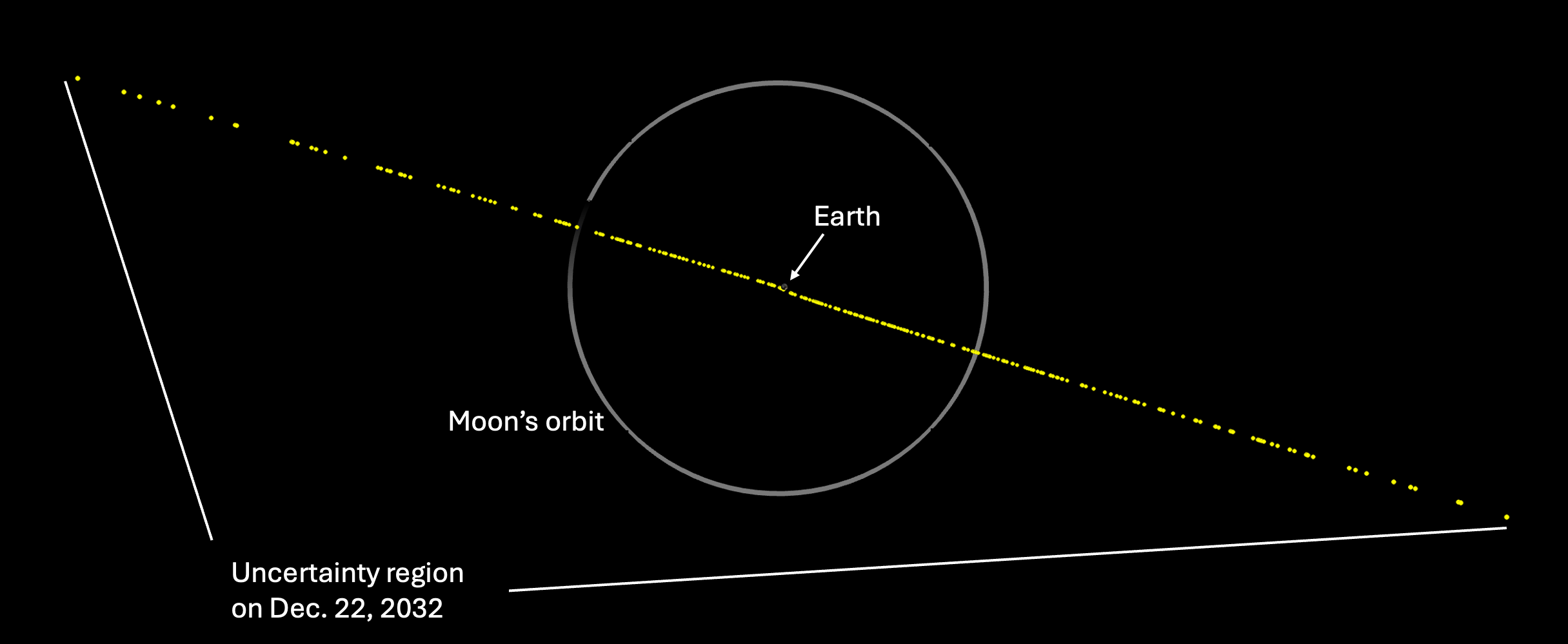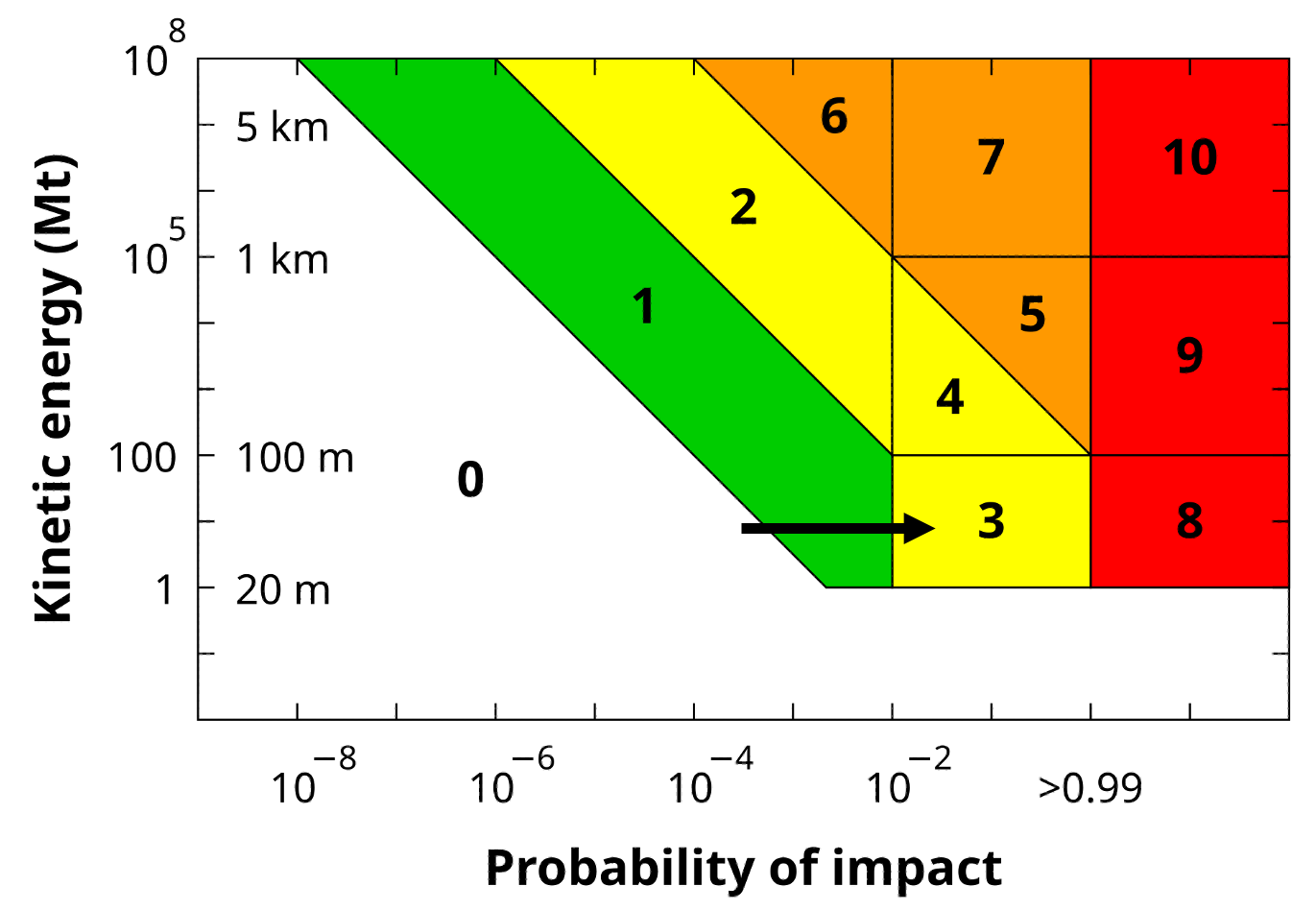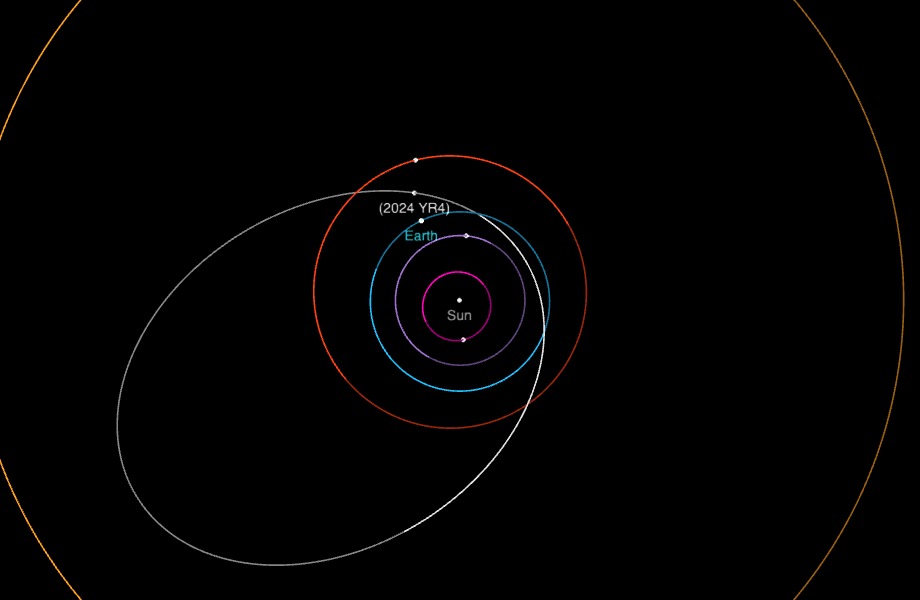



CNEOS analysis of near-Earth asteroid 2024 YR4, which is estimated to be about 40 to 90 meters wide, indicates it has a more than 1% chance of impacting Earth on Dec. 22, 2032 — which also means there is almost a 99% chance this asteroid will not impact. These analyses will change from day to day as more observations are gathered. The CNEOS analyses are used for NASA’s contribution to the International Asteroid Warning Network (IAWN). After the impact probability for this asteroid reached 1%, IAWN issued its official notification for the potential impact.
Below are some frequently asked questions regarding this evolving situation.
2024 YR4 was discovered on December 27, 2024, by the NASA-funded Asteroid Terrestrial-impact Last Alert System (ATLAS) telescope in Rio Hurtado, Chile. The object had a close approach with Earth on December 25, which is why it became bright enough to be detected in the asteroid surveys.

|
| Discovery images of 2024 YR4. Credit: ATLAS |
Asteroid 2024 YR4 is most likely in the range of 40 to 90 meters (130 to 300 feet) in size. This estimate is based measurements of the asteroid’s brightness. The size cannot be further constrained without thermal infrared observations, radar observations, or imagery from a spacecraft that could closely approach the asteroid.
Right after discovery, JPL/CNEOS Sentry impact monitoring system identified the possibility that 2024 YR4 might impact on December 22, 2032. As is typical, the initial orbit could only be computed approximately, and the prediction uncertainties for 2032 were so large that the probability of the object being in an exact impacting trajectory was very small. As new observations were collected, the orbit has become more accurately constrained and the predicted positional uncertainty region in 2032 has narrowed considerably, with the Earth still within the swath of possible positions. As a result, the impact probability has gradually increased over the last month, until on January 27 it surpassed 1%, an important threshold.

|
| The yellow dots show the position uncertainty of asteroid 2024 YR4 when it encounters Earth in 2032, based on observations up to January 31, 2025 (orbit solution 40). Only 1.6% of this region intersects the Earth, which is the small dot at the center of the Moon's orbit. |
In the unlikely event that 2024 YR4 is on an impact trajectory, the impact would occur somewhere along a risk corridor which extends across the eastern Pacific Ocean, northern South America, the Atlantic Ocean, Africa, the Arabian Sea, and South Asia.
2024 YR4 is currently rated at Torino Scale 3. It is uncommon for an asteroid to be rated at Torino Scale 3, because that can only happen for an asteroid larger than 20 meters (65 feet) with an impact probability of 1% or greater, which is quite rare for an object of this size. Smaller objects have reached higher impact probabilities, even up to 100%, but they are always rated 0 on the Torino Scale because of their size. Small asteroids typically burn up in the atmosphere and rarely cause any damage at all.
There have been a few asteroids over the years that have reached Torino Scale 1, with lower impact probabilities, but these all eventually dropped back to Torino Scale 0.

|
| Torino Scale diagram. The black arrow represents the evolution for 2024 YR4, which started with a Torino Scale of 0. As the probability of impact increased, it reached Torino Scale 1 on December 29, and then 3 on January 27, 2025. |
As astronomers report new observations, Sentry will reassess the future trajectory and impact probability. Consult the Sentry page for the latest probability estimate.
As of January 31, 2025, 2024 YR4 is 48 million km (30 million miles) from Earth and moving farther away on its outbound path around the Sun. The asteroid will continue its orbit around the Sun and will safely return to Earth’s neighborhood in 2028.

|
| Orbit of 2024 YR4 with positions as of January 31, 2025. |
2024 YR4 will approach close to Earth again in 2028 at about 20 times the Earth-Moon distance, and there is no chance that it might impact Earth during that passage. The 2028 close approach may be too distant for radar to detect the asteroid.
2024 YR4 is currently observable and being tracked with several telescopes, including the Magdalena Ridge Observatory in New Mexico, the Danish Telescope, and the Very Large Telescope in Chile. As the asteroid moves away from Earth and becomes fainter, larger and larger telescopes will be required to detect it. The asteroid should remain observable through early April 2025, when it will get too far and become too faint to be detected from the ground. Space-based infrared telescopes could observe even later.
Yes, it is possible. Archival images, especially around the time of a close approach to Earth in 2016, are being searched to see if 2024 YR4 could have been accidentally observed then. This search is not easy because the plane-of-sky position at that time is uncertain. However, using the range of possible locations and rates in the sky may reveal a detection at lower signal than what survey pipelines would have identified at the time. If an archival detection were found, the orbit of 2024 YR4 would be known to a much greater degree of certainty and the impact probability would then change dramatically.
In the unlikely event that 2024 YR4 hits the Earth in 2032, it would impact at a high velocity, roughly 17 kilometers per second (about 38,000 miles per hour).